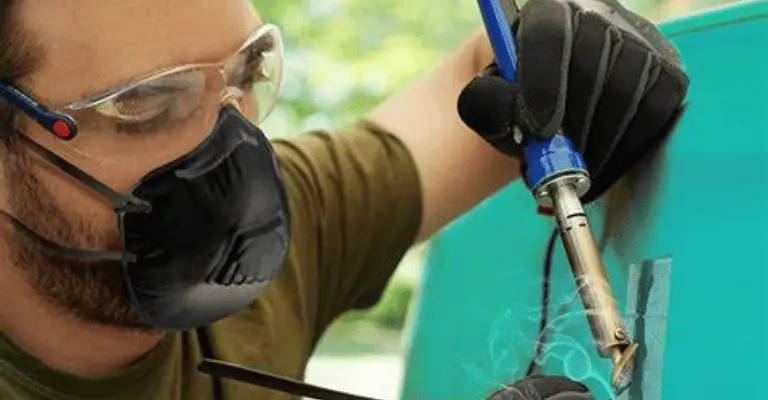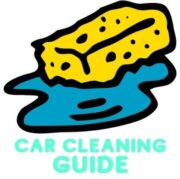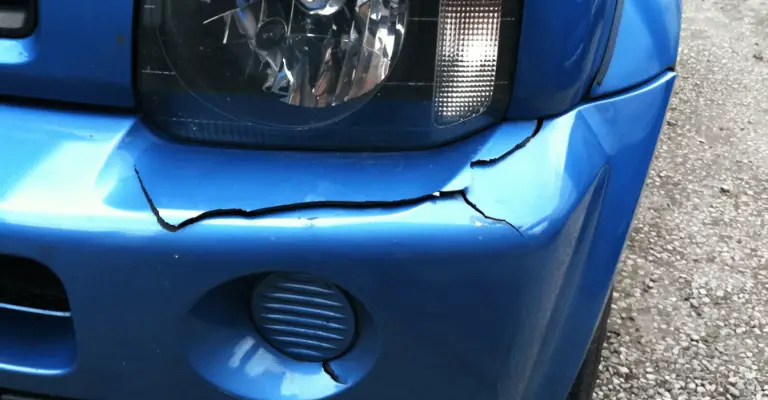Last Updated on September 22, 2023 by Chase Manhattan
- How to Clean Car Carpets Quick and Easy - July 10, 2024
- Can You Touch Up Clear Coat? Yes and No (Here’s Why) - November 25, 2023
- How To Wax A Car By Hand: A Comprehensive Guide - November 14, 2023
Cracked plastic may seem like a death sentence for your car’s aesthetics, but relax, we’ve got you covered. As your experienced partner on the road, we unlock top-tier DIY secrets on how to fix cracked plastic for cars in 2023.
Delve into our step-by-step guide that sheds light on the most effective techniques to repair, restore, and rejuvenate your car’s interior and exterior! Whether it’s age-related wear or a commuting accident, our guide is the much-needed roadmap on your journey from ravaged to revitalized. Say goodbye to extensive professional repair bills, and let’s turn cracked plastic nightmares into effortless fixes! Keep reading and let’s get to crackin'(or not).

Quick Navigation
What Are Some Ways to Fix Cracked Plastic?
Whether it’s a small crack on your car’s dashboard or a large crack on the bumper, there are several ways you can fix cracked plastic. These include methods like plastic welding, using a plastic patch, and even using acetone for ABS plastic specifically. The method you choose will depend on the severity of the crack and the type of plastic you’re working with.
What’s The Best Way to Fix Cracked Plastic? Plastic Welding, Duh!
One of the most effective ways of fixing cracked plastic is through a method known as plastic welding. This process involves using heat to melt the plastic, allowing the broken pieces to fuse together. This technique can be highly effective for repairing cracked plastic, but it does require some skill and specialized tools.
What’s Plastic Welding?
Plastic welding is a process of fusing two pieces of plastic together using heat. The heat melts the plastic, and when it cools, it forms a bond that is often as strong as the original plastic.
How To Plastic Weld
There are a few different ways to plastic weld, including using heat or friction.
With Heat
Heat plastic welding, as the name suggests, involves using a heat source to melt the plastic. This could be a specialized plastic welding tool or a simple soldering iron. The key is to apply the heat evenly and carefully to avoid burning through the plastic.
With Friction
Friction plastic welding is another method that involves using a rotating piece of plastic to generate heat. The friction between the rotating plastic and the pieces to be joined heats the plastic until it melts, allowing the pieces to be fused together.

What Are My Other Options?
Besides plastic welding, there are other methods you can use to fix cracked plastic.
Using Acetone (for ABS Plastic specifically)
Acetone is a potent solvent that can dissolve and smooth ABS plastic, a common type of plastic used in many consumer products, including some car parts. This method involves applying the acetone to the cracked area, which will dissolve and fill the crack as it evaporates.
What’s ABS Plastic?
ABS (Acrylonitrile Butadiene Styrene) plastic is a common thermoplastic polymer used for injection molding applications. It’s known for its toughness, glossy appearance, and resistance to physical impacts and chemical corrosion, making it an ideal material for many automotive components.
Use a Plastic Patch
For larger holes or cracks, a plastic patch may be the best solution. This involves cutting a piece of plastic to the size of the hole or crack, then using heat to melt the patch and the surrounding plastic together.
What Are Plastic Patches?
Plastic patches are pieces of plastic that are used to repair large holes or cracks in other plastic items. They’re typically made from the same type of plastic as the item being repaired to ensure a strong bond.
Can You Glue Plastic Together? Yes!
Gluing is another option for fixing cracked plastic. Certain types of glue, such as super glue or plastic model glue, can form a strong bond that can hold the cracked pieces together. However, this method might not be as durable as plastic welding or using a plastic patch.
Are There Any Products That Can Repair Cracked Plastic?
Numerous cracked plastic repair kits available in the market today can provide all the necessary tools and materials to fix cracked plastic effectively. These kits usually include a plastic adhesive, a reinforcing mesh, and sometimes even a small heat tool for plastic welding.
How Can You Prevent Plastic from Cracking?
Prevention is always better than cure. To prevent plastic from cracking, avoid exposing it to extreme temperatures, direct sunlight, or harsh chemicals. Regular cleaning and maintenance can also help keep the plastic in good condition and prevent cracks from forming.
Recap of The Options To Repair Cracked Plastic for Cars
In summary, there are several options for repairing cracked plastic in cars, including plastic welding, using a plastic patch, using acetone for ABS plastic, and gluing. The best method depends on the size and location of the crack and the type of plastic.
Ending Thoughts
Learning how to fix cracked plastic can save you a lot of money and help extend the life of your car’s components. With the right tools and a bit of patience, you can repair plastic cracks and keep your car looking great for years to come.
FAQs
Here, we answer some common questions about fixing cracked plastic:
Can I use epoxy to fix cracked plastic?
Yes, epoxy is a strong adhesive that can be used to fix cracked plastic. However, it’s important to ensure that the epoxy is suitable for the type of plastic you’re repairing.
Can I use duct tape to fix cracked plastic?
While duct tape can provide a temporary fix for cracked plastic, it’s not a long-term solution. Over time, the adhesive on the tape can wear off, and the crack may worsen.
Is it possible to fix cracked plastic on a bumper?
Yes, it’s possible to fix cracked plastic on a car bumper using the methods described in this guide. However, if the crack is very large or the bumper is severely damaged, it might be necessary to replace the entire bumper.
Can all types of plastic be repaired?
Most types of plastic can be repaired, but the method and effectiveness of the repair can vary depending on the type of plastic. Some plastics, like polyethylene and polypropylene, can be difficult to repair because they don’t easily bond with adhesives.
What causes plastic to crack?
Plastic can crack due to various reasons, including exposure to extreme temperatures, direct sunlight, or harsh chemicals. Physical stress or wear and tear over time can also cause plastic to crack.

